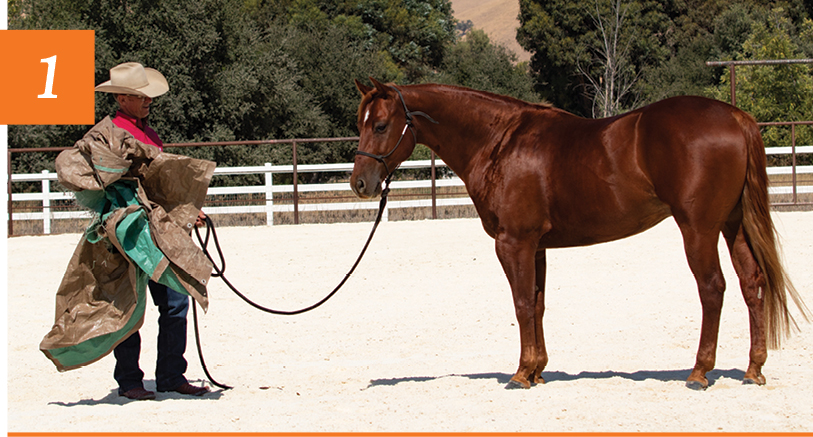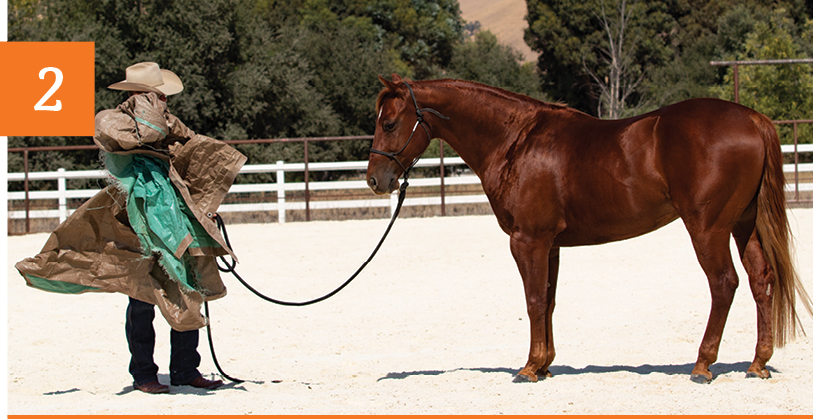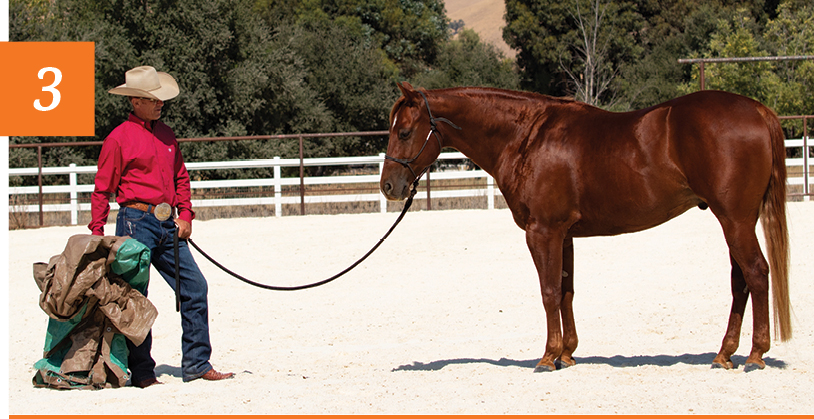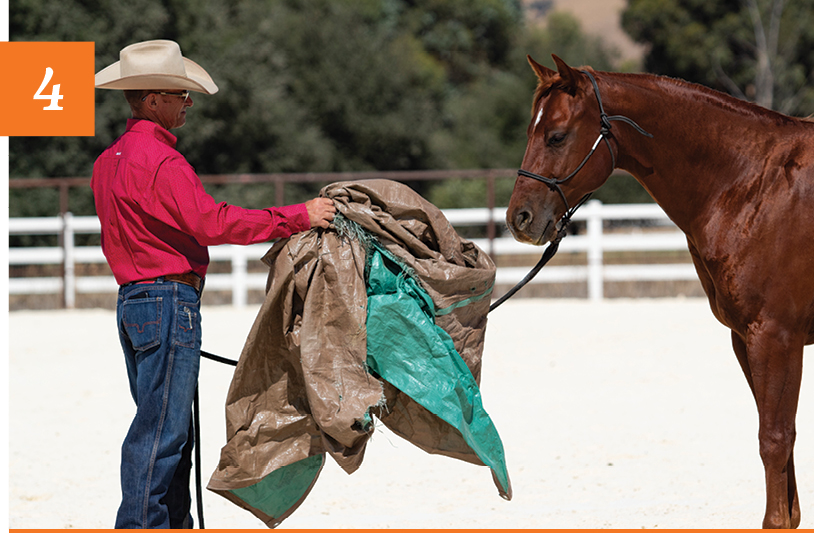Learning horsemanship is like climbing a hill. As you go up, you can see only to the top of the hill. It’s hard even to imagine anything else. Once you get up there, however, you can see the next hill beyond, farther up. And it’s a whole new vista.
Training and getting along with horses is a lot like that. This month I want to share a key insight with you, one I’m realizing more and more is the secret, if there is one, to horse training. My perspective on training has evolved in the last couple of years. As the philosopher and author Wayne Dyer says, “If you change the way you look at things, the things you look at change.”
I used to follow the traditional method of desensitizing, for example. I’d apply pressure by, say, presenting the item I wanted the horse to get used to, such as a tarp. If the horse moved, I’d move with him, keeping the pressure on by holding the tarp near him until he finally stopped moving. At that instant I’d immediately remove the pressure, thereby rewarding the behavior I wanted.
This method works, but with the change in how I’m looking at things, I now realize there’s an even better way—one that enhances the horse’s trust in me and builds the relationship between the two of us.
My new method is to proceed slowly and purposefully, watching the horse closely all the while. I present the tarp, and the instant he shows concern about it, I remove it for a moment.
By the traditional method of desensitizing, this is “wrong.” But it’s very right in another way—in what it tells my horse. It says, “I see your concern, so I take the scary thing away. You don’t need to worry.”
With repetition, my horse learns to trust that I’m going to stay under his threshold of anxiety. Knowing that, he relaxes…then gets curious about whatever I’m desensitizing him to.
At that point, it’s just a question of gradually increasing the length of time I keep the pressure on—the item ever closer to the horse—while he remains calm and interested.
It’s a bit of a paradigm shift, to be sure. No chasing about. No anxious horse. Just relaxed learning.
The traditional method is all about “winning.” This way is about the conversation between you and your horse. You’re less concerned about what exactly you can get him to do, and more concerned with how he’s feeling about it—and the relationship between the two of you.
Sound interesting? Let’s have a closer look.
1. Observe Your Horse

Here, I’m preparing to present a scary object—in this case a tarp. Before I do, I observe my horse carefully so I’ll be able to tell the instant his demeanor starts to change. In this photo, he’s standing calmly, his face relaxed, his ears showing he’s interested, but unafraid.
2. Apply Pressure: ‘Here You Go…’

As I slowly raise the tarp even a little, note the responses in my horse. He’s sucked back—observe how the tree in the background is now closer to his withers. You can also tell by his raised neck and the slight backward slant of his front legs. Note also the left hind leg getting ready to lift, and his right ear turning back—he’s definitely thinking about getting out of there. This exact moment—before he becomes alarmed enough to actually move—is the ideal point to let him know how tuned in to him you are, and how willing to keep him safe. You do this by…
3. Remove Pressure: ‘It’s OK’

…lowering the tarp and taking the pressure off. Note how my horse is now de-stressed—he’s lowered his head and relaxed his ears, and the expression in his eyes is no longer troubled. When you repeat this step over and over, your horse comes to realize that you’re so attuned to how he feels that you can be trusted to keep him safe. That gives him confidence and builds the relationship between the two of you. Along the way…it also desensitizes him to the tarp—perhaps even more quickly than would’ve happened the old way.
4. The Result: ‘No Problem!’

And here you see it: My horse is completely comfortable with the tarp right under his nose—note his nostrils inhaling the scent of it. His expression is calm, his eye is soft, and his ears are showing interest but not fear. From here I can continue in the same way until I’m rubbing the tarp all over his body. As long as I follow the same method—assuring him I’ll always keep him safe—he’ll continue to trust and go along with me. We’re just having an interesting “conversation,” building our bond…and he’s learning not to fear the tarp as a bonus.
Best of all, the connection and trust we’re creating will be there the next time I go to train on this horse—and that’s what I’m really after.
Watch Warwick!
View Warwick’s build-trust exercise in action.

Australian clinician and reiner Warwick Schiller lives in Hollister, California. He’s an NRHA reserve world champion and represented Australia at the 2010 and 2018 FEI World Equestrian Games. He solves horse problems by changing the rider’s perspective. Learn more about Schiller and find his clinics, books, and videos at warwickschiller.com.




